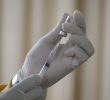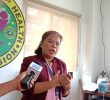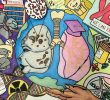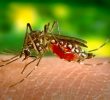No Emergency Help
Meanwhile, people did not know whom to ask for help in times of emergencies such as floods, typhoons, drought, hunger, earthquake or war. And they did not count on government agencies for help, as shown in the data that a measly 2.8 percent of the respondents relied on local government help, 1.7 percent relied on the military and only 0.2 percent relied on the Department of Social Welfare and Development (DSWD).
Instead, people ran to health workers. Four of 10 respondents relied on the Barangay Health Workers or Community Health Workers (BHWs/CHWs), while 32 percent relied on midwives and only one percent on doctors.
Already poor, sick and miserable, many villagers faced the threat of displacement brought on by intensified military operations, the CBHS study found.
In some of the communities surveyed by CBHS, the military�s aerial bombings and ground operations hampered the delivery of health services.
Worst, there were cases where health workers themselves were victims of harassments and other forms of human rights violations perpetrated by elements of the Philippine military, according to the study.
One incident is the experience of the Mindanao CDx teams in Sibulan, Sta. Cruz, Davao del Sur, middle last year.
Carlos Atten, a Bagobo Tagabawa who heads the peasant organization Nagkahiusang Mamumuo sa Sibulan (United Farmers of Sibulan), said in an interview that the military prevented the CBHS health workers from conducting CDx in sitio Landing Dos. The reason: they were suspected as supporters of the New People’s Army NPA. (Cheryll D. Fiel/davaotoday.com)
The traditional healers — hilots and albularyos — were the heroes in these communities. Sixty-two out of 178 respondents, or 34.8 percent, went to them for their ailments. Only 35 or 19.7 percent went to hospitals, and 18.5 percent or 33 went to Rural Health Units (RHUs). Meanwhile, 26 or 14.6 percent went to private clinics, and 22 or 12.4 percent consulted CHWs.
The sick had to walk for miles and miles just to get to the nearest hospital. Some had to ride the habal-habal (single motorcycle). In the absence of this only means of transportation in the hinterland villages, the sick had to cross rivers and go over mountains just to get medical attention.
The Mindanao CDx shows that at least 50 percent, or 120 of the respondents, traveled from six to 10 kilometers just to reach the nearest hospital, 22 percent or 51 traveled 11 to 15 kilometers and 15 percent or 35 traveled 16 to 20 kilometers while 13 percent or 31 traveled 2 to 5 kilometers.
Health Education
Even awareness about their health was lacking among the respondents, according to the CBHS findings. Two out of 10 residents were clueless as to what caused their diseases.
The CDx teams also uncovered a case of a sitio (subvillage) where nearly every household had a leper.
Leprosy is supposed to be a treatable disease but Beltran lamented that the lepers could hardly come out of their houses because of the social stigma. In the case of the sitio, Beltran said they found out that even the Philippine military is culpable. According to the residents, soldiers had threatened to shoot lepers if they ventured out of the village.
Dr. Ivy Boyose-Nolasco, a volunteer physician of the Urban Integrated Health Services Foundation Incorporated (UIHSFI), a Davao-based health institution, explained that leprosy is a “very preventable” illness and that, after treatment, it is no longer infectious.
Family Planning
Lack of education extendsed to matters as basic as information on family planning in the communities.
The CDx revealed that there was a significant number of respondents � nearly 30 percent — who did not use family planning due to the alleged side effects.
Awareness on proper sanitation was no better. In fact, one of the findings cited that one out of 10 households threw its garbage in the stream or river where they also get their drinking water.
In terms of waste disposal, at least 50 percent of the household surveyed buried their waste, 14 percent wrapped it, while 10 percent disposed of it in an open pit.
Comprehensive View
The CBHS�s Beltran said they hoped that through the CDx findings, they would be able to provide stakeholders in the health sector “a comprehensive view of the current health situation of the people in Mindanao.”
Aside from distributing it to the communities, health institutions and community based health organizations, the Mindanao CDx will be submitted to the Department of Health (DOH) and international institutions, such as the World Health Organization.
The survey was conducted in communities where there were existing organizations and members who recognized the need to help in the undertaking. The Community Based Health Programs and the health committees of the organizations in the communities took charge of the actual conduct of the CDx.
Beltran said the survey used questionnaires, interviews, and focus-group discussion with the community leaders, health workers and traditional leaders. The results were given back to the community for feedback. (Cheryll D. Fiel/davaotoday.com)










